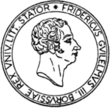Günter Fruhtrunk was born in Munich in 1923. After finishing high school, he began to study architecture but gave up after two years and volunteered to fight in the Second World War. Fruhtrunk saw service as a mountain soldier in Finland, where he sustained a serious head injury in 1945. During his war service in Finland, Fruhtrunk began to work artistically, he painted the vast Finnish landscape with its unusual polar colours.
His first solo exhibition took place in 1947 in Freiburg. From the end of the War until 1950 he had private lessons with William Straube in Neufrach, and from 1949 onwards, Baumeister and Bissiert introduced him to abstract art. Fruhtrunk visited Paris in order to work with Fernand Léger, and it was there that he painted his first abstract picture. In 1954 he obtained a grant and was able to spend some time in Paris. He stayed on, and under the influence of Léger and his friend Arp was led to abstract art. In 1960 he had his second solo exhibition in the Denise René Gallery.
Günter Fruhtrunk considered his artistic career to have begun in 1954, and he even destroyed some of his earlier works. In 1965 he participated in the New York MOMA exhibition "the responsive eye". In 1967 he was offered and took up a position at the Academy of Art in Munich. After separating from his second wife, he married Hiltrud Steffens in 1971 and moved to Périgny-sur-Yerres. His wartime head injury gave him acute pain from time to time, which is reflected in his pictures. In 1982 Guenter Fruhtrunk took his own life in his studio in the Academy of Art in Munich.
The picture "Restless Green" (1968/70) combines the typical characteristics of Fruhtrunk's work. Parallel stripes which end within the picture but intersect its edges, seem restless in their irregularity. They attract the viewer's attention and, at the same time, seem to impart a feeling of security through their colour, here predominantly green. On the other hand, the rhythmic energy of the narrower, bright blue edges, and of the black stripes that enter diagonally and stop at an invisible diagonal in the other direction, emphasize this restlessness. These two conflicting effects, one striving for harmony and the other irritating the viewer with its opposing structures, give the picture a quality of still being in the process of becoming. As the artist himself put it, the viewer is enticed to "drown in the green".






